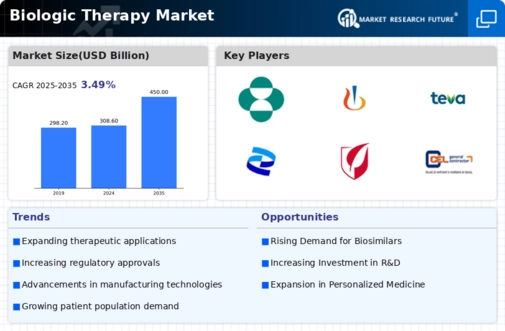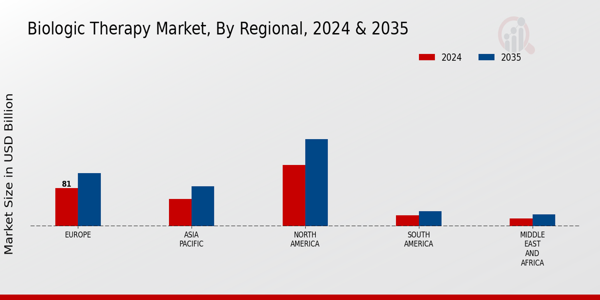The Biologic Therapy Market has seen considerable growth over recent years, driven by the increasing prevalence of chronic diseases and a rising demand for innovative treatment options.
This market is characterized by the development of biopharmaceuticals, which are derived from living organisms and have proven highly effective in treating a variety of conditions, including autoimmune diseases, cancers, and infectious diseases.
As the industry evolves, competition has intensified, with numerous pharmaceutical companies investing heavily in research and development to create new biologic therapies. The landscape includes a mix of established players and emerging biotech firms,
all aiming to capture market share through innovative product offerings, strategic partnerships, and extensive clinical trials. Companies in this sector are focused on improving patient outcomes, enhancing treatment accessibility, and addressing unmet medical needs, which further fuels competitive dynamics within the market.
Merck & Co. has established itself as a significant player in the Biologic Therapy Market, leveraging its strong pipeline of innovative therapies and a well-developed distribution network. The company has a robust portfolio of biologic medications that cater to various therapeutic areas, showcasing its commitment to advancing healthcare.
Its strengths lie not only in the efficacy and safety of its products but also in its considerable investments in research and development, which have propelled the company to the forefront of biologic innovation. Merck & Co.'s strategic collaborations with academic institutions and other biopharma companies further enhance its market presence,
allowing the company to stay ahead in the highly competitive landscape. Additionally, its global reach enables Merck & Co. to adapt its strategies across different markets, ensuring that its biologic therapies meet the diverse needs of patients worldwide.
Novartis is another key competitor in the Biologic Therapy Market, recognized for its extensive product line and strong focus on research and development. The company has a diverse range of biologics aimed at treating various diseases, including oncology, immunology, and ophthalmology.
Novartis's strengths include its commitment to innovation and high-quality manufacturing standards, which are critical in the biologic sector where precision is paramount. The company has been active in strategic mergers and acquisitions to enhance its capabilities and expand its portfolio, successfully integrating new technologies and therapies that complement its existing offerings.
Notably, Novartis has made significant strides in gene therapy and cell-based treatments, positioning itself as a leader in cutting-edge therapeutic options. The company's global presence, coupled with its adaptive marketing strategies, strengthens its competitiveness in the market, enabling it to respond effectively to the changing dynamics and growing demands of the biopharmaceutical landscape worldwide.


















Leave a Comment